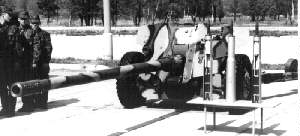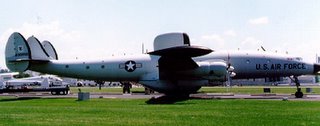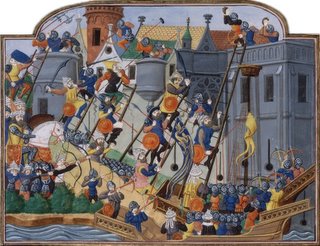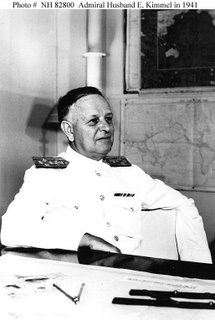This is coolbert: The "Last Stand". This theme seems to be a favorite of Hollywood when making war movies. A small group of soldiers, cut off from all hope and help, and surrounded by an endless "sea" of enemy troops, fights valiantly and bravely, sometimes winning and surviving, sometimes not winning, but always showing a mettle that is admirable.
And it is generally accepted in military circles that the most dangerous and greatest test of a military unit's ability is when that unit comes under attack by overwhelming numbers of the enemy.
And historically, such "last stands" have actually occurred. And been significant events in all cases, much having been written and said about them. And movies made too! These "last stands" just seem to possess a psychological impact that is really profound!
In American history, the Alamo and Wake Island are two examples.
In British history, Lucknow, Rorke's Drift, and the Imjin are examples of British pluck and resolve.
In the two American examples, the American forces were finally defeated by what was indeed overwhelming numbers of the enemy. But not before inflicting very heavy losses on their attackers. And inspiring their compatriots who went on to ultimate victory.
In the three British examples, the British forces, besieged as they were, did emerge victorious, albeit with great loss to themselves, but also after inflicting very great loss upon their attacker.
What seems to be a common thread in all these "last stands" is how the defenders see themselves, and see themselves in the context of their situation.
At the Alamo, the defenders saw themselves as men who were defending their GOD-given-inalienable-rights. Rights that been guaranteed to them and then taken away by a despotic Mexican dictator. Rights that they were ready to die for [and die they did].
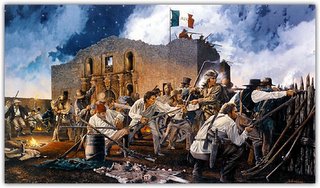
The Marines at Wake Island saw themselves as representing the U.S. military. A military that had been administered shameful defeats by the aggressor Japanese. The Marines on Wake Island did realize their position was hopeless, but they intended to "show the way" as to how to defeat the Japanese [this they did].
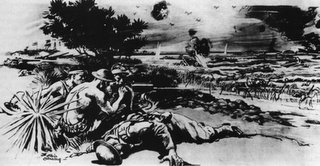
It is significant that in my mind the attackers at both the Alamo and Wake Island mistreated the dead and the captives after the fighting had ended.
The bodies of the dead defenders of the Alamo were burnt, and all trace of them eliminated. This behavior of cremation and scattering of ashes was at the time unheard of in a Catholic country.
And one of the first thing the Japanese did upon occupying the island of Wake was to behead five enlisted Marines in retaliation for the enormous casualties the Marines had inflicted upon the Japanese attackers.
What this tells me is that the attackers in both cases, Mexicans and Japanese respectively, realized that something of very great significance had occurred. A significance that worked against them. A significance they hope to erase or minimize. They were not successful!
At the various British "last stands", the troops defending at Lucknow [Sepoy Mutiny] [read further about Lucknow by clicking here], Rorke's Drift [Zulu War] [read further about Rorke's Drift by clicking here], and the Imjin [Korea] [read further about the Imjin by clicking here], all faced annihilation at the hands of enemies that possessed extreme numerical superiority.
In the former two cases, literal annihilation was at hand, the mutinous Sepoys and the Zulus not being of the mind to take prisoners.
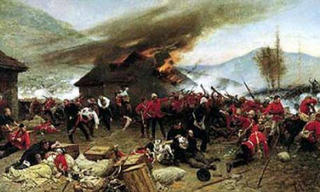
And at the Imjin, the Chinese communist troops were not noted for fair and humane treatment of prisoners, those prisoners that they were willing to take.
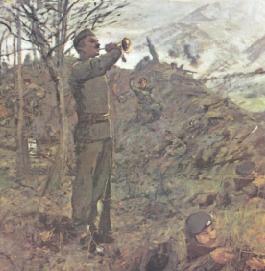
These last stands were no-holds-barred-to-the-death-warfare. And yet in all three cases the British line "held" and the defenders were victorious. [Among the battalion of the Gloucestershire Regiment, who bore the brunt of the Chinese attack, of six hundred men that went into the battle, only sixteen were left standing at the end of three days!!!].
It is also interesting to observe that in the two former cases, Lucknow, and at Rorke's Drift, British units fighting their last stands succeeded at a time and a place where other British units nearby had failed.
The British writer Bryan Perrett comments about British resolve in this manner:
"Much of course [speaking about the course of the action at the last stand] depends upon the character of the commander concerned, but this of itself is not enough unless he has the complete support of his men. From what, then, does this fierce motivation stems? Anger? Fear? Esprit de Corps? Tradition? Discipline? Loyalty? Belief in a cause? Hope of relief? Or self-sacrifice on the behalf of others?"
It would seem that all the above are present in some measure in all these "last stands", British and American. Each incident must be looked at individually to determine the motives of the defenders.
[My own personal note!] It is interesting to note that the significance of the British defense of Lucknow and the sacrifice of the defenders was seen in such a light that the only place in the British Empire where the British flag could fly twenty four hours a day was over Lucknow!!

When the British raj in India ended, British troops, almost one hundred years later after the siege had ended, as one of their last acts, cut down the flag pole at Lucknow, dug up the stub of pole left in the ground and left the entire area concreted over. This all done at night so that in the morning, the newly formed Indian government could not fly their flag over such a "sacred site"!!!!! Such was the impact of Lucknow in the mind's of the British even for decades after the event!!
coolbert.
